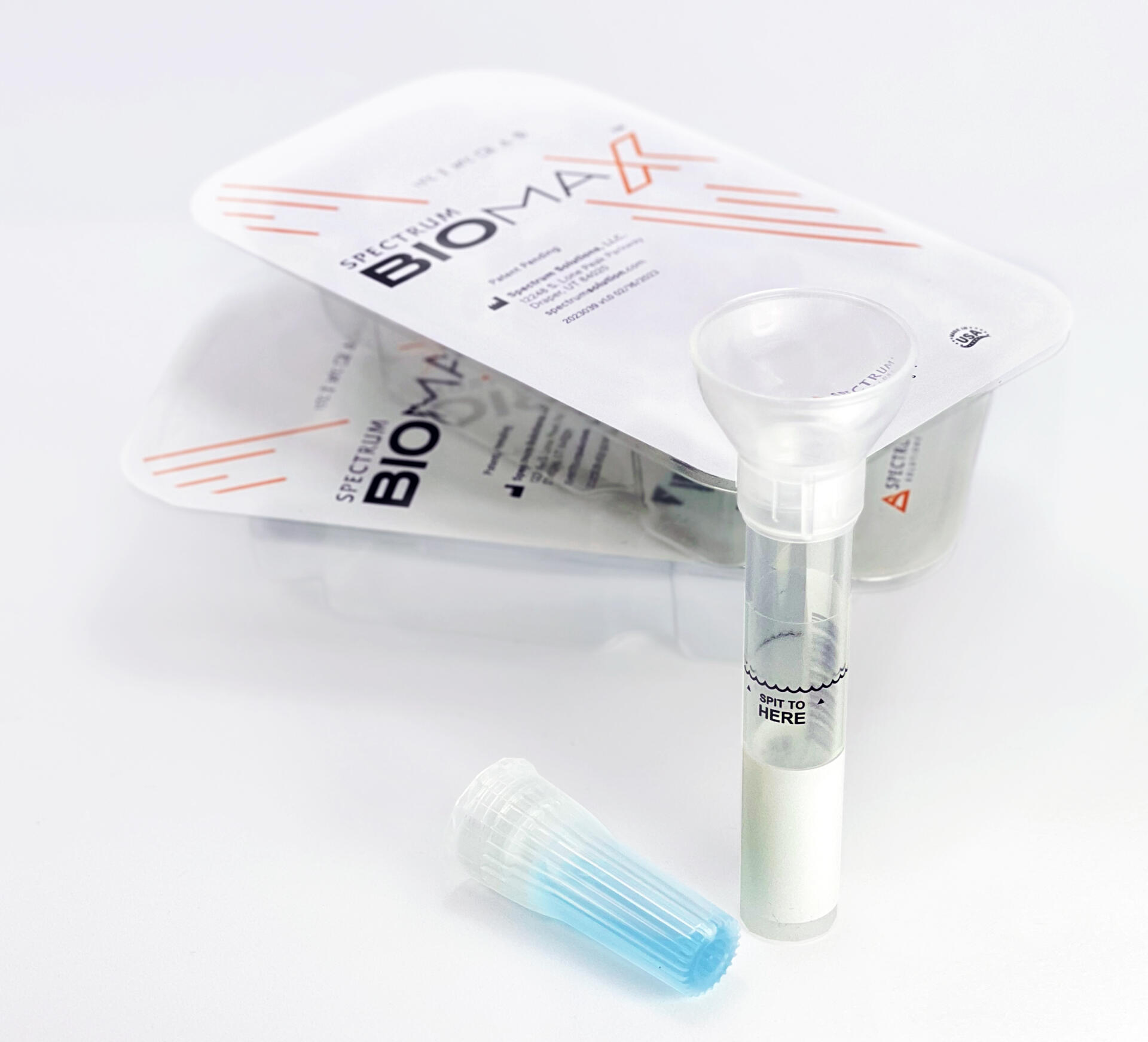Following the Coronavirus DNA Map and Breakthrough COVID-19 Detection Using Saliva
Almost as soon as the novel coronavirus began appearing, scientists around the globe began looking closely at the DNA of the virus to learn more about its movement from place to place and to better understand where it came from and how to respond to it. As we learn more about emerging diseases, identifying the DNA makeup of these viruses has become standard practice. In China, Ground Zero for the Covid-19 outbreak, scientists quickly began collecting samples from those affected by the infection. They uploaded dozens of DNA samples to online sites so that the genome could be studied and compared with other cases.
When the first patient in Brazil was confirmed in late February, Brazilian researchers were quick to sequence the genetic code of the virus and compare it with over 150 sequences already posted online. The 61-year-old from Sao Paulo had traveled to Italy, so that was most likely his point of origin for acquiring the infection. However, the sequence of his virus indicated something more complicated, linking his illness to a passenger from China as well as an outbreak in Germany. (1)
As it spreads from area to area, the novel coronavirus mutates, developing seemingly random changes in single genetic letters in its genome. By tracking those variations, scientists can trace the evolution of the virus. This helps them to understand which cases are most closely related and how the virus is changing in different parts of the world. All this data is being tracked on a website called Nextstrain (www.nextstrain.org). The website is an open-source effort to “harness the scientific and public health potential of pathogen genome data.” As a result, data is being uploaded instantly and scientists are able to track the evolution of the virus and how it’s spreading in almost real-time.
Following the Coronavirus DNA Map & Breakthrough Detection Using Saliva
Almost as soon as the novel coronavirus began appearing, scientists around the globe began looking closely at the DNA of the virus to learn more about its movement from place to place and to better understand where it came from and how to respond to it. As we learn more about emerging diseases, identifying the DNA makeup of these viruses has become standard practice. In China, Ground Zero for the Covid-19 outbreak, scientists quickly began collecting samples from those affected by the infection. They uploaded dozens of DNA samples to online sites so that the genome could be studied and compared with other cases.
When the first patient in Brazil was confirmed in late February, Brazilian researchers were quick to sequence the genetic code of the virus and compare it with over 150 sequences already posted online. The 61-year-old from Sao Paulo had traveled to Italy, so that was most likely his point of origin for acquiring the infection. However, the sequence of his virus indicated something more complicated, linking his illness to a passenger from China as well as an outbreak in Germany. (1)
As it spreads from area to area, the novel coronavirus mutates, developing seemingly random changes in single genetic letters in its genome. By tracking those variations, scientists can trace the evolution of the virus. This helps them to understand which cases are most closely related and how the virus is changing in different parts of the world. All this data is being tracked on a website called Nextstrain (www.nextstrain.org). The website is an open-source effort to “harness the scientific and public health potential of pathogen genome data.” As a result, data is being uploaded instantly and scientists are able to track the evolution of the virus and how it’s spreading in almost real-time.
No Current Vaccine
Because currently there is no vaccine, experts say the best chance of stopping the virus is through aggressive public health measures, including finding those who’ve been exposed and isolating them. These quarantines are the best defense against spreading the virus. Another critical part of identifying the genome is to help in developing both treatment and vaccine. In this instance, scientists want the DNA information for the purpose of creating a synthetic replica that can be used to create medication and vaccines without having to obtain live samples from patients.
Artificial copies can also help scientists to better predict mutations and the effects they have on how the disease spreads. According to Stanley Perlman, a microbiologist at the University of Iowa, “The synthetic virus is just a substitute for the actual virus, but with the DNA clone you can manipulate it and find the weak points and develop a therapy.” (2)
72 Hour Virus Lifespan
Scientists have recently learned that the coronavirus is able to survive up to 72 hours on stainless steel and plastic surfaces, and up to 24 hours on cardboard. It can also survive for several hours as particulate matter in the air. This reinforces the need for basic hygiene such as covering your mouth when you cough or sneeze, thoroughly washing hands and wiping down all surfaces with cleansers such as hot water and soap or with antibacterial/virus products. The need to monitor these behaviors for ourselves is critical when you factor in that spread and more so if you’re responsible for someone in a higher risk group. People who are immunocompromised, those with diabetes, the elderly, infants, and young children, and those with chronic health issues are considered to be at an increased risk for contracting and becoming severely ill from the coronavirus. It’s crucial for these folks to stay healthy and avoid being in large groups or public areas where they risk a significant increase to exposure. (3)
Knowledge is Power Over Fear
The impact on families, schools, businesses, and communities is being compounded with each passing day. Fear, and a lack of understanding often leads to panic and causes people to take drastic and sometimes irrational measures out of concern from contracting the virus. Of course, the best way to combat the steady uprise in fear, is with knowledge. For most simply being aware of your actions, avoiding all unnecessary contact with people, and keeping a good social distance is really the best thing you can do to protect yourself and your sensitive family members. Being aware of the actions that can be taken, making sure to follow the CDC recommendations, and staying alert to risks can be very empowering when things outside feel overwhelming.
“Using saliva to test for COVID-19 overcomes many of the challenges the nation faces that are inherent to current testing methods including supply shortages and risks to exposure for healthcare professionals,” said Stephen Fanning, CEO of Spectrum Solutions.
Current testing methods for the coronavirus requires individuals to endure invasive and often uncomfortable swabbing of the throat and nasal cavity to gather a biosample to test. A recent study performed by Rutger’s University Laboratory (RUDCR) (4) was able to show saliva collected using the Spectrum SDNA-1000 collection device could be used instead of the swab in part due to its patented preservation solution that was able to suspend and protect the viral RNA. The Spectrum SDNA-1000 is the only FDA EUA authorized device for COVID-19 testing. A breakthrough on its own, however for many, the fact that saliva collection is safe, fast, easy, and painless is almost more so. The gravity of this is understood when thinking about all the family and loved ones we have that are either healthcare professionals’ on the front lines where this helps to limit exposure, or part of the demographic said to be at greater risk including the elderly, small children, and those living with special needs.
For more information on the SDNA-1000 you can visit our infographic or product page. The Spectrum SDNA-1000 saliva collection kit is not a direct-to-consumer or at-home collection test for COVID-19. Testing must be ordered by a doctor and processed at a CAP CLIA accredited laboratory.
Resource Links:
(4) (https://www.rutgers.edu/news/new-rutgers-saliva-test-coronavirus-gets-fda-approval)
Spectrum
in the News
Spectrum
in the News
Noninvasive
Saliva Diagnostics
This changes everything!
Saliva analysis looks at the cellular level, the biologically active compounds, making it a true representative of what is clinically relevant. Engineered to lead the saliva collection industry, the BioMAX™ delivers the safest and most robust biosample for the earliest detection and diagnosis of disease and infection.
Since 2020 and the COVID-19 pandemic, Spectrum’s saliva collection system not only introduced, it continues to expand the molecular diagnostics industry and its understanding of the opportunities saliva offers patients, providers, and laboratories.
Noninvasive
Saliva Diagnostics
This changes everything!
Saliva analysis looks at the cellular level, the biologically active compounds, making it a true representative of what is clinically relevant. Engineered to lead the saliva collection industry, the BioMAX™ delivers the safest and most robust biosample for the earliest detection and diagnosis of disease and infection.
Since 2020 and the COVID-19 pandemic, Spectrum’s saliva collection system not only introduced, it continues to expand the molecular diagnostics industry and its understanding of the opportunities saliva offers patients, providers, and laboratories.

Outside-of-the-Box Thinking, Inside-of-the-Box Innovation
Anywhere from customized testing solutions to new medical science product innovations–we’re here to help.


